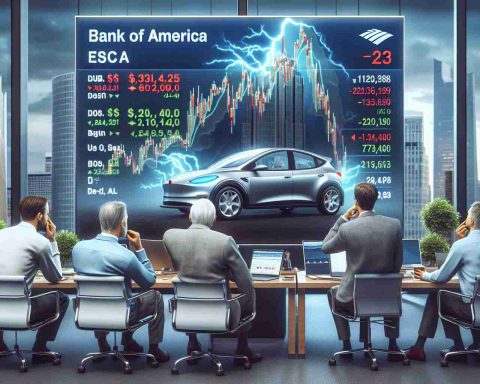The transportation world is undergoing a dramatic transformation with the rise of Electric Vehicles (EVs). However, this shift is presenting significant challenges to our aging power grids. Unlike traditional fuel-based systems, EV charging stations are entirely dependent on electricity, leading to an increased demand that many grid operators are struggling to manage.
As the popularity of EVs soars, peak energy consumption has surged, posing risks of grid instability during times of high demand. The current infrastructure, often decades old, was never designed to handle the dynamic loads created by multiple EV chargers being used simultaneously.
During peak hours, when numerous EVs connect to the grid, the resulting spikes can severely strain the power supply. This can lead to costly upgrades that are essential to ensure the reliability of electricity services and prevent disruptions such as brownouts.
With the electrification of vehicles at an accelerating pace, these challenges are expected to grow unless we develop and implement innovative solutions to enhance our energy systems. Addressing this pressing issue requires immediate attention and strategic planning to safeguard against potential grid failures and ensure a sustainable future for electric transportation.
The Future of Electric Vehicles: Addressing Power Grid Challenges
Introduction
The rise of Electric Vehicles (EVs) has marked a pivotal shift in the transportation sector, promising significant environmental and economic benefits. However, this transition is not without its challenges, particularly concerning the capacity and reliability of our aging power grids.
Understanding the Impact on Power Grids
As the demand for EVs increases, the pressure on power grids escalates. Unlike traditional fuel vehicles, which do not depend on electricity for operation, EVs require consistent and robust electrical support. This dependence has led to a dramatic surge in peak energy consumption, a trend that grid operators are struggling to manage effectively.
Grid Limitations
Many of our current power grid systems were established decades ago and were not designed to accommodate the high and dynamic loads created by multiple EV chargers operating simultaneously. These older infrastructures often experience spikes in demand during peak charging hours, leading to potential grid instability and reliability issues.
Pros and Cons of EV Charging Infrastructure
# Pros:
– Environmental Benefits: Reduces carbon emissions compared to gasoline-powered vehicles.
– Reduced Fuel Costs: Electricity generally costs less than gasoline, leading to cost savings for consumers.
– Innovation in Energy Solutions: Promotes the development of renewable energy sources like solar and wind.
# Cons:
– Strain on Power Grids: Inadequate infrastructure can lead to brownouts and increased energy costs.
– Initial Costs: Installation of EV charging stations and upgrades to the grid can be expensive.
– Limited Charging Infrastructure: In many areas, the availability of charging stations is still lacking compared to traditional refueling options.
Strategies for Improvement
To address these challenges, a multi-faceted approach is required:
– Upgrading Power Grids: Investing in modernizing and expanding grid capacity can enhance reliability and support growing energy demands.
– Smart Grid Technology: Implementing smart grid solutions can optimize energy distribution, allowing for real-time monitoring and management of electricity loads.
– Incentives for Renewable Energy: Encouraging the use of renewable energy sources can alleviate the pressure on traditional power systems during peak usage.
FAQs about EVs and Power Grids
What challenges do electric vehicles pose to current power grids?
Electric vehicles lead to increased peak energy demand, which many aging power grids are not equipped to handle. This can result in grid instability and potential brownouts.
What are smart grids?
Smart grids use technology to improve the efficiency, reliability, and sustainability of the production and distribution of electricity. They allow for real-time monitoring and manage loads effectively.
How can renewable energy help with EV charging?
Renewable energy sources commonly produce energy during off-peak times, which can be stored or used directly for EV charging, thus reducing dependence on conventional power sources during peak demand.
Conclusion
The integration of Electric Vehicles into the transportation framework represents both an opportunity and a challenge. As we navigate this transition, investing in infrastructure and innovative technologies will be essential to ensure that our electric future is sustainable and resilient. The pathway ahead is complex, but with targeted strategies, we can overcome the hurdles presented by the growing popularity of EVs.
For more insights on this subject, visit ChargePoint for comprehensive data and updates on electric vehicle charging solutions and infrastructure enhancements.











